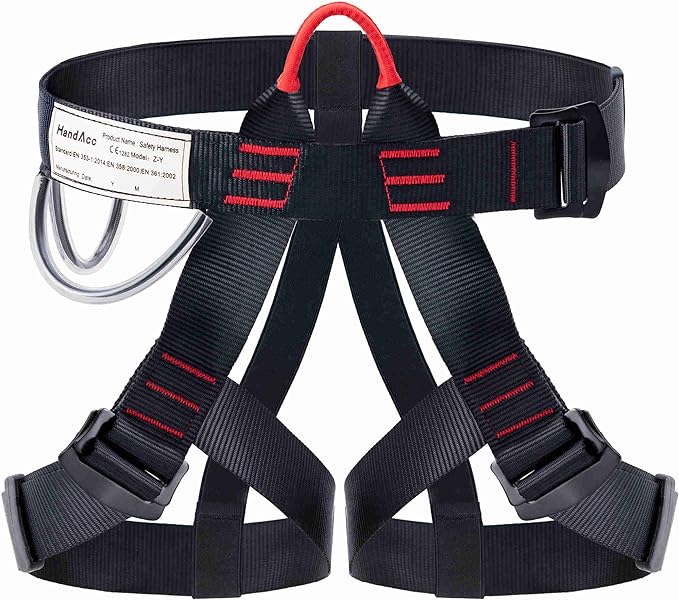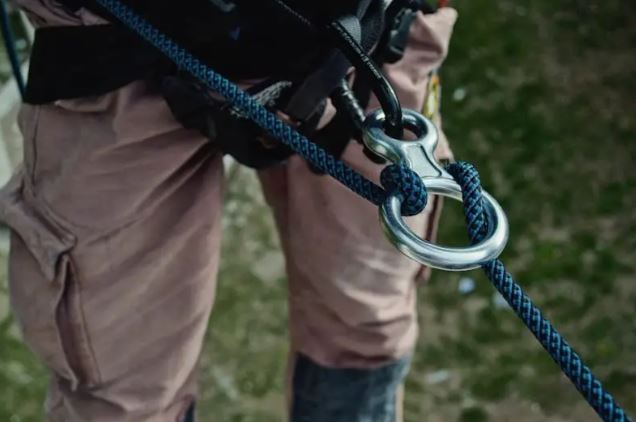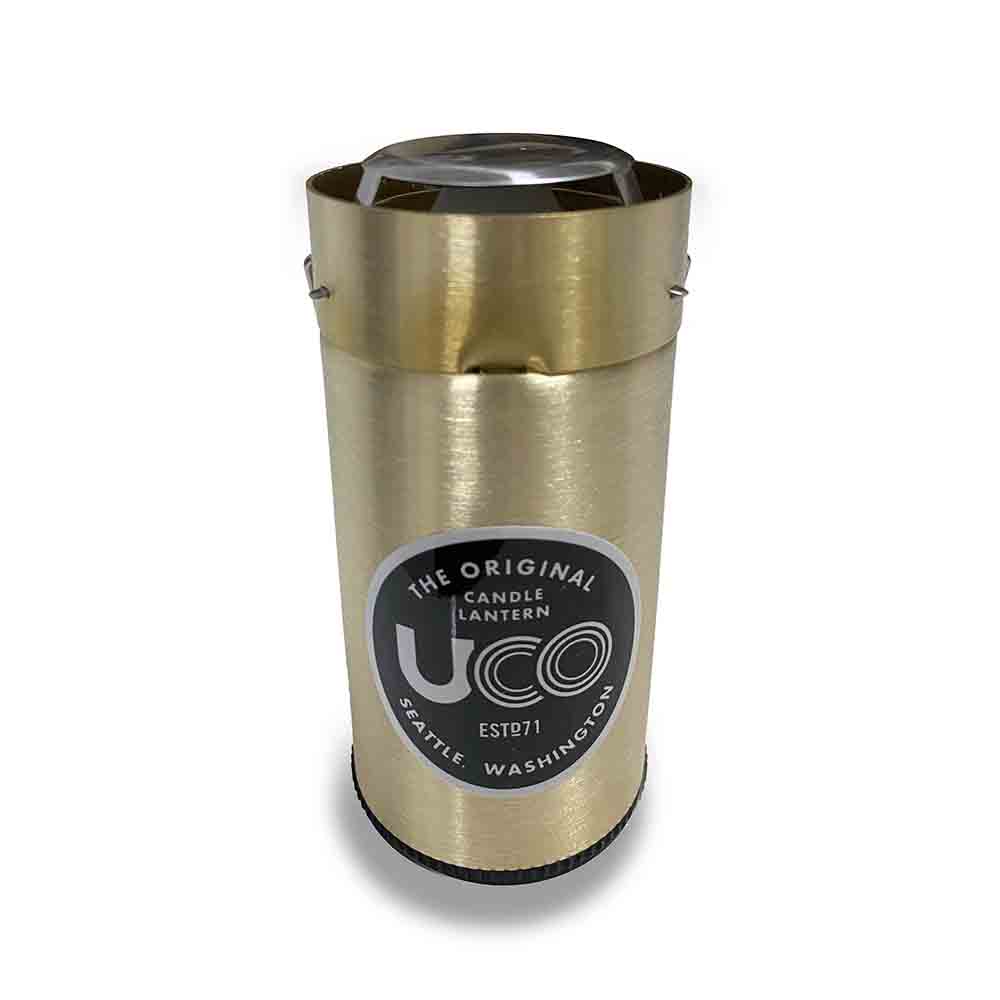A comprehensive checklist is vital to ensure you have all the necessary rappelling gear before you hit the trails. Essential items include a sturdy rappelling harness, a reliable rappelling rope, carabiners, a descender or belay device, a helmet, and gloves. Additionally, consider accessories like rope bags, knee pads, and proper footwear. Each piece of equipment plays a crucial role in your safety and enjoyment of the sport.
Top 10 Must-Have Rappelling Devices for Safe Descents
When it comes to safe descents, quality devices are non-negotiable. The top ten must-haves include:
- A dynamic rappelling rope for shock absorption
- An auto-locking carabiner for secure connections
- A figure-eight descender for controlled descents
- A tubular belay device for versatility
- A rappelling harness with adjustable leg loops
- A climbing helmet to protect against falls and debris
- Prusik loops for emergency ascents
- A rope protector to prevent wear
- A sturdy pair of rappelling gloves
- An anchor system for establishing a solid base
These devices, each serving a unique purpose, are the foundation of a safe rappelling setup.
How to Choose the Right Rappelling Harness for Your Adventure

Selecting the right rappelling harness is about comfort and reliability. Beginners should look for a harness with padded waistbands and leg loops, adjustable fittings, and enough gear loops for equipment. It’s also vital to choose a harness that fits snugly yet comfortably, with no room for slippage, to maintain safety throughout your journey.
The Ultimate Guide to Rappelling Ropes: Types, Care, and Selection
Rappelling ropes are arguably the lifeline of your gear. There are two primary types: static ropes, which are great for abseiling and rescue operations, and dynamic ropes, which are designed to stretch and absorb the energy of a fall. Caring for your rope is also crucial. Regularly inspect it for frays or weak spots, keep it clean, and store it away from direct sunlight and moisture to extend its lifespan.
The Importance of Proper Rappelling Gloves: Features and Recommendations
Rappelling gloves are not just for comfort; they’re an essential safety feature. They protect your hands from burns, cuts, and abrasions. Look for gloves with reinforced palms, breathable fabric, and a snug fit. A good pair of gloves will give you the necessary grip and durability to manage your rope efficiently.
Rappelling Gear Maintenance: How to Ensure Your Equipment is Safe
Finally, maintaining your rappelling gear is as important as having the right equipment. Regularly check for signs of wear and tear, clean your gear after each use, and store it properly. Follow manufacturer guidelines for maintenance and replacement. Remember, when it comes to rappelling gear, safety is always the top priority.
By carefully selecting and maintaining your rappelling gear, you’ll set the stage for a safe and enjoyable camping adventure. With these insights, you’re well on your way to mastering the vertical challenges that nature has to offer.
The Best Rappelling Helmets of the Year: Safety Meets Comfort
When it comes to rappelling, a helmet isn’t just a piece of gear; it’s a vital safeguard for your most valuable asset—your head. This year’s top rappelling helmets strike a remarkable balance between impenetrable safety and featherlight comfort. With advancements in materials and design, manufacturers have been able to create helmets that provide robust protection while ensuring that climbers don’t feel weighed down. The leading models feature adjustable straps for a snug fit, ample ventilation to keep you cool, and materials that withstand the rigors of outdoor use. They come in various styles, proving that safety gear can also have aesthetic appeal. When choosing a helmet, prioritize one that meets safety certifications and fits your head comfortably—your focus should be on the climb, not adjusting your gear.
Advanced Rappelling Gear: What the Professionals Use
Moving on, advanced climbers know that the quality of their rappelling gear can be the difference between a successful descent and a perilous situation. Professionals often opt for gear that offers enhanced features such as increased load capacity, durability, and ergonomic design. Advanced gear might include auto-locking carabiners, sophisticated descenders with anti-panic functions, and harnesses equipped with multiple adjustment points for fine-tuning fit. The use of high-tech materials also provides weather resistance and reduces weight without compromising strength. While such gear comes at a premium, it represents a long-term investment in safety and performance for those who rappel frequently.
Rappelling Gear for Kids: Ensuring Safety for Young Climbers

Moreover, introducing children to rappelling can be a rewarding experience, fostering a love for the outdoors and teaching valuable skills. However, ensuring the safety of young climbers is paramount. Children’s rappelling gear is specifically designed with their smaller frames and unique needs in mind. Helmets are lightweight and adjustable to accommodate growing adventurers, while harnesses are tailored to secure the smaller bodies of children without restricting movement. When outfitting a child, look for gear that has undergone the same rigorous safety testing as adult equipment, ensuring that the fun remains safe at every step.
Budget-Friendly Rappelling Gear: Where to Invest and Where to Save
Conversely, rappelling doesn’t have to break the bank. Budget-friendly rappelling gear is available that doesn’t compromise on safety. Start by investing in a quality helmet and harness—these are non-negotiables for protection. Save money by looking for deals on ropes and carabiners, which can often be found at discounts if last season’s models are still in stock. Additionally, consider purchasing gently used or refurbished gear from reputable sources. Remember, while you can economize on some items, never compromise on the quality of critical safety equipment.
Rappelling Gear Reviews: Honest Insights from Experienced Climbers
Furthermore, before making any purchase, it’s wise to consult rappelling gear reviews. Experienced climbers often share their honest insights online, detailing their experiences with different gear. Reviews can provide real-world information on durability, ease of use, and safety features that aren’t apparent in product descriptions. Take the time to read reviews from multiple sources and weigh the pros and cons mentioned by those who have put the gear to the test in various conditions.
Customizing Your Rappelling Gear Set-up for Maximum Efficiency
Customizing your rappelling gear setup can lead to maximum efficiency and comfort on your climbs. Start by assessing the types of rappelling you enjoy and the environments you frequent. Tailor your gear choices to your specific needs—whether that’s a lighter setup for long treks to remote rappelling sites or more robust gear for industrial applications. Customization also involves fine-tuning the fit of your harness and adjusting the length of your ropes to suit the heights you typically face. With a customized gear setup, you can climb with confidence, knowing you have exactly what you need for the task at hand.
Innovations in Rappelling Gear: The Latest and Greatest in Climbing Technology
In the realm of outdoor adventure, the innovation of rappelling gear has marked a significant evolution in climbing technology. As climbers seek to conquer new heights and descend with ease, manufacturers are responding with cutting-edge equipment that pushes the boundaries of design, safety, and functionality. Modern rappelling gear boasts enhanced materials that offer improved strength-to-weight ratios, while smart devices that integrate seamlessly with mobile technology provide climbers with real-time data about their gear’s performance.
Furthermore, the advent of auto-locking and self-braking descenders have revolutionized the way we rappel, adding an extra layer of security to the activity. These innovations not only make rappelling more accessible to a wider range of enthusiasts but also enhance the overall experience by allowing climbers to focus more on their technique and less on managing their equipment.
Rappelling Gear for Different Climates: Adapting to Your Environment
Adapting to various environmental conditions is crucial in the world of rappelling, and your gear must be versatile enough to handle the challenges presented by different climates. In cold, icy conditions, rappelling devices must be operable with gloves, and ropes should be treated to resist water absorption. Conversely, in hot, arid climates, gear needs to provide reliable performance despite exposure to UV rays and sand.
Manufacturers have responded by creating gear tailored to these extremes, such as thermally insulated harnesses for cold weather, and UV-resistant ropes for sun-drenched locales. It’s this specificity that allows rappellers to confidently and safely navigate the diverse terrains they encounter.
The Role of Carabiners in Rappelling: A Comprehensive Guide
Carabiners are the unsung heroes of rappelling gear, serving as the critical link between you, your rope, and the anchor point. These metal loops with spring-loaded gates come in various shapes and sizes, each designed for a specific function. From the symmetrical oval carabiners that provide smooth rope glide to the asymmetric D-shaped ones that offer a higher strength-to-weight ratio, understanding the role of each type is essential.
This comprehensive guide would delve into the nuances of carabiner selection, emphasizing the importance of choosing one that matches the specific demands of your rappelling activity, be it for simple descents or complex rescue operations.
Rappelling Gear Ratings: Understanding Safety Standards and Certifications
Safety is paramount in rappelling, and understanding gear ratings is non-negotiable. Climbing equipment undergoes rigorous testing and must meet specific standards and certifications before it can be deemed safe for use. For instance, the CE mark in Europe and the UIAA certification globally are indicators of quality and reliability.
Each piece of gear, from ropes to harnesses, is rated for a certain number of falls, weight limits, and usage types. Being aware of these ratings and what they signify helps climbers make informed decisions about the gear they entrust their lives to.
Tips for Packing Rappelling Gear for Multi-Day Climbing Trips
Embarking on a multi-day climbing trip requires meticulous planning, particularly when it comes to packing rappelling gear. The key is to balance weight with necessity. Start with the essentials—a reliable harness, rope, helmet, carabiners, descenders, and gloves. Then, consider the specifics of your trip. Will you need extra anchors? How about a rope bag to protect your lifeline from the elements?
Organizing your gear in a way that maximizes accessibility and efficiency is critical. Use color-coded carabiners for quick identification or rope bags with built-in tarps for rapid deployment. Remember, the goal is to carry everything you need without being weighed down by excess.
The Evolution of Rappelling Gear: A Historical Perspective
Rappelling gear has come a long way from its rudimentary origins. Initially, rappelling (or abseiling, as it’s known in some circles) was a simple method used by climbers to descend with the aid of a rope. Early gear was rudimentary, often fashioned from whatever materials were at hand. As climbing grew in popularity, so did the demand for more specialized equipment.
The 20th century saw the introduction of dynamic ropes and the development of the figure-eight descender, which are still in use today, albeit in more refined forms. The journey from hemp ropes and improvised harnesses to today’s sophisticated gear is a testament to the ingenuity and spirit of innovation inherent in the climbing community.





